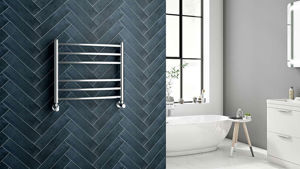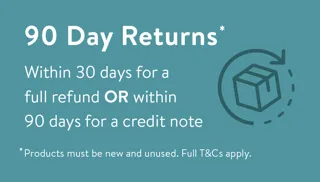A blocked bath or shower drain is one of the most common problems you’ll come across in the everyday use of your bathroom. Even if the water is simply slow to drain, over time this will cause a slippery build-up of soap scum, dirt and grime on the bottom of the bath or shower tray that could be unsightly or even dangerous. Whichever form your pesky blockage has taken, it needs fixing.
Luckily, it’s usually not too difficult to unblock a bath or shower waste yourself, so there’s no need to call a plumber just yet. There are a number of DIY methods you can try to clear the blockage. In this article we’ll have a look at a few of them and talk you through what you need to do.
How To Unblock a Shower Drain:
- By Hand
- Using a Coat Hanger
- Using a Plunger
- Snaking the Drain
- Using Baking Soda & Vinegar
- Using Strong Chemicals
(Click to jump to)
1. Clearing Out the Blockage By Hand
The first step is to take a look and see if you can spot what’s causing the blockage. Remove by lifting or unscrewing (whichever works for your type of waste) the chrome cover of your waste, or pulling out the plug if you’ve got an old school plug and chain variety.
The culprit is usually a build-up of hair and soap scum. If you can spot hair in the bottom of the drain, see if you can’t just reach in and pull it out using your hand. Nasty business but better than a plumber’s invoice and an empty wallet.
2. Using a Coat Hanger
You could also try a coat hanger. This is something everyone is likely to have lying around their house, so it is always worth trying! Bend a wire coat hanger so it will fit down the plug hole. With the hook first, try and see if you can reach the blockage, then twist the coat hanger to hook the debris out.
3. Using a Plunger
The plunger is the next obvious step to clear a blocked drain. You’ll need a ‘cup’ type plunger for clearing a basin, bath or shower blockage.

• Make sure you don’t use any chemicals yet, as using a plunger with chemicals is inevitably going to splatter them all over your clothes or skin.
• You’ll need to have enough water in the bath or shower tray to completely submerge the cup of the plunger. Too much water and you’ll make a splashy mess, so use a bucket to remove the excess if you’re drain isn’t clearing at all.
• You will get better results if you can block off any outlets (overflow, another basin etc.), so if you can put a wet cloth in these drains then you will have a higher chance of succeeding with this method.
• Plunge with a vertical up-and-down action, keeping the handle straight and vertical. Tilting at an angle will reduce the force and potentially break the seal you’re making with the cap. Do this for 15-20 seconds and then have a look at the results.
• If the drain is still blocked after your first plunger attempt, repeat the process a couple more times as you may have simply moved the blockage further down the pipes.
4. Snaking the Drain
No, not that kind of snake. A ‘snake’ or auger, is a long, flexible steel cable wound on a handle. Plumbers will often have an expensive electrical model, but you can buy a handheld snake for £10-£20 or so.

5. Using Baking Soda and Vinegar
Baking soda on its own does a decent job of loosening grimy sludge from your drain, and when you add some vinegar as well you get a chemical reaction that should hopefully jolt the blockage loose.

This isn’t a method that will work for the very troublesome blockages, but for slow-draining bath or shower wastes, this is a cheap, eco-friendly method worth trying.
• First pour a pot of boiling water down your drain.
• Pour a small amount (perhaps half a cup) of baking soda down the drain. Let it sit there for a couple of minutes.
• Follow it up with a cup of white vinegar and a little more hot water. Leave for 5-10 minutes.• Flush with boiling water.
You should be able to hear the chemical reaction as it bubbles away. With a bit of luck, the debris caught in your drain will be broken down.
6. Using Strong Shower Drain Unblockers
Using strong chemicals to unblock a drain is not something we recommend. This isn’t to say they don’t work but they are quite dangerous to use and there’s plenty of horror stories.
Any chemicals strong enough to unblock a drain will be damaging to the environment, so try other methods first.

Caustic Soda
Caustic soda, or sodium hydroxide, has fantastic de-greasing qualities. It breaks down grease and fat, so it’s pretty good at unblocking drains. It’s cheap to buy, and creates a strong exothermic reaction (meaning it warms up) to break down the blocked drain. However, if you do choose to go down this route, be very careful. Make sure you follow the instructions very closely, and cover your eyes and skin.
Sulphuric Acid
Sulphuric acid is another chemical commonly used to unblock drains. It can chemically break down many materials, as well as generate heat to melt blockages.
In the UK, sulphuric acid drain un-blockers such as One Shot can be easily purchased at no great expense, and can clear pretty much any blocked drain by literally dissolving whatever is in its path. In the right hands and in the right environment, this harsh chemical is very effective at clearing drain blockages.
This said, it emits terrible fumes, corrodes, and can cause very serious harm to the skin if it comes into contact, or blindness if it gets in the eyes. It also has a very powerful chemical reaction when it meets with other drain-cleaning chemicals, and generates heat that has been known to cause explosions and eruptions of toxic fumes. For these reasons, it can only really be applied to a mostly dry drain.
Moreover, there are plenty of reports of it literally melting through pipework. In theory, its chemical composition means it shouldn’t attack the plastic directly itself, but perhaps in these cases it has reacted with the sealant or split the pipe due to the heat created as a by-product.
So there you have it – several methods of DIY drain unblocking that might save you a plumber’s fee. If you do opt to go down the chemical route, be very careful, keep your skin and eyes covered, and follow instructions to the letter. If you can’t unblock the drain yourself, I’m afraid it’s time to get your wallet ready and call out that plumber.






